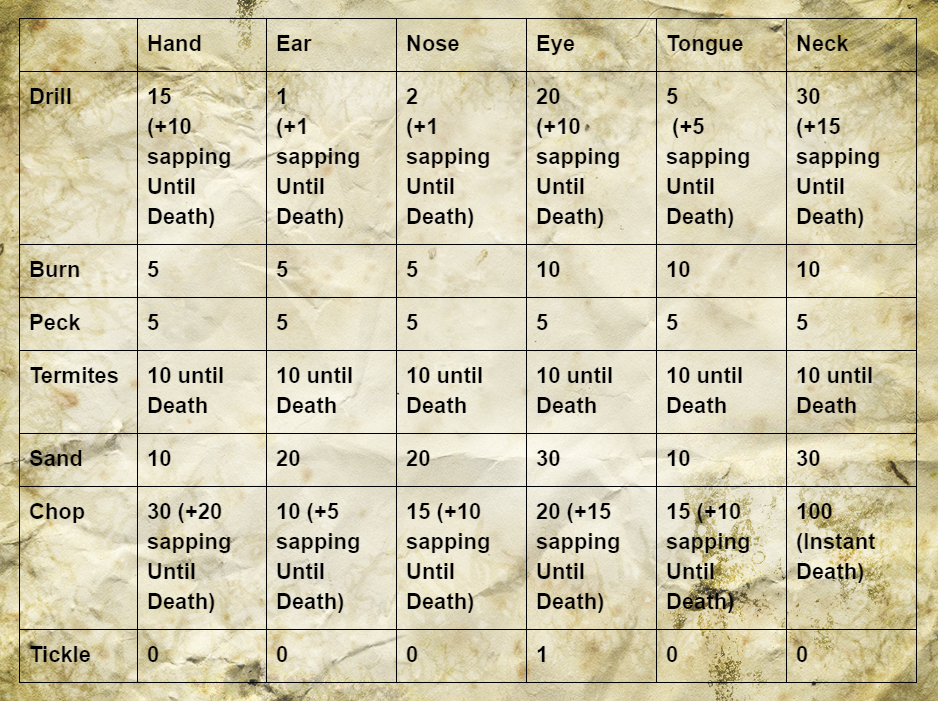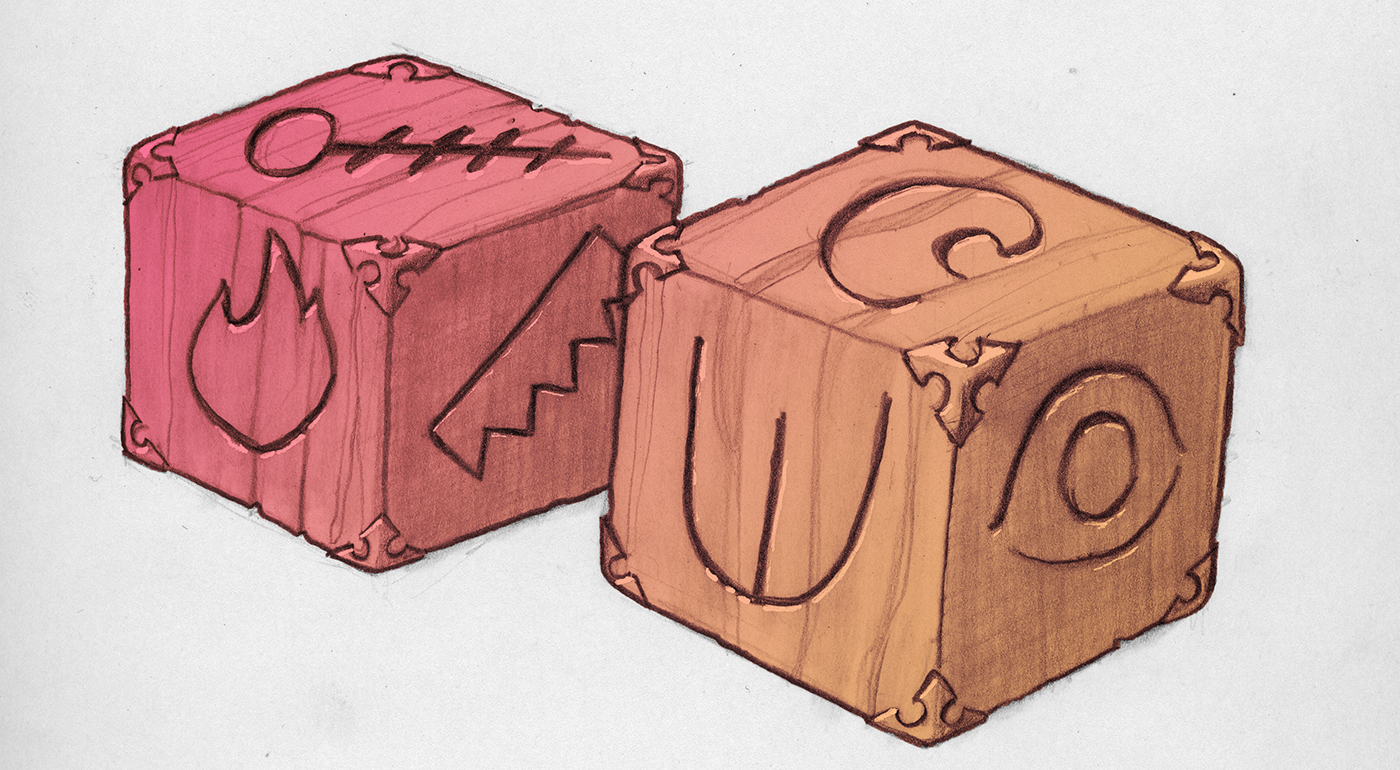Dueling Dice of Doom
"I jump and bash and kick and poke! I sawed off his head before he spoke!"
History
Known as early as 811 A.C. in Megaloth City, Dueling Dice of Doom began as simple marionette plays staring Bulwark the Belligerent. A crowd favorite, this character was a classic fool, approaching every situation in the worst way possible and suffering the consequences. The character evolved over time to become more violent, employing dazzling special effects and battle damage to other puppets. It is thought that at some point people began to place bets before the show on what characters Bulwark would dispatch and in what manner. Due to the interactive nature of the staged puppet shows, the actors began to tease the crowd with expected outcomes, then subverting them. Around 2,000 A.C. the first presentation of what is now known as Dueling Dice of Doom was presented, complete with randomized dice rolling by the characters.
Execution
The narrative framework around the game changes, but the core mechanic remains the same. Our 'hero', Bulwark, encounters various characters while on some kind of adventure, and no matter the intent of the characters the interaction always ends with a Dice Duel. The procedure is as follows: Each puppet is given three dice. One die has six body Parts, the other has six inflictions of Pain and the final has a Promise. One at a time, the dice are rolled through some kind of device or contraption that can be minimally jostled so that the character has limited control over the outcome. The dice are over-sized so that the whole audience can see the results. When both die are cast the result is played out in 'gory' detail, by actors in black who use comically over-sized tools of destruction on the puppet. Each combination carries a known damage value, and the audience tracks the battle until the end. Due to the much less-scripted nature of these shows, an overt gambling meta-game is attached, allowing audience members to win or lose money.
The technical details are as follows:
Die 1: Promise
Jostle (Let’s you bump your opponent's cage while they are rolling)
Slow Time (Let’s you slow down time for 3 seconds)
Time Bonus (Gives you extra time for your roll before the cage starts shaking)
Flip (Let’s you flip your die over if you don’t like your roll)
Antidote (Cures poison)
Gel (Stops burning)
Die 2: Part
Hand
Nose
Ear
Eye
Neck
Tongue
Die 3: Pain
Drill
Sand
Peck (woodpecker)
Chop
Burn
Tickle
Saw
Termites
Examples:
Player A rolls the Part Die and gets Ear, the Pain Die and gets Drill. This means they get an ear drilled which causes 1 point of damage out of a starting 100 hit points. They got off quite easily.
Player B rolls the Part Die and gets Hand, the Pain Die and gets Chop. This causes 25points of damage out of a starting 100 hit points. But that's not all. Now they are sapping, causing an additional loss of 5 points every subsequent turn. Not a good way to start.
Player C rolls the Part Die and gets Neck, the Pain Die and gets Chop. Whoopsy! This is the worst possible combination. They are damaged 100 out of 100, due to their head no longer being attached.
Player D rolls the Part Die and gets Eye, the Pain Die and gets Peck. While being very awkward and creepy, this only causes 10 damage but also applies Termites, causing an additional 10 points of damage every subsequent turn.
Damage Table


by Josh Foreman
Components and tools
Most DDD shows are operated out of street vendor tents or wagons. Troupes of four to twelve typically operate the show/game. Puppeteers, bookies, muscle, technicians, artists and show-masters are the usual roles, and the smaller the troupe the more rolls an individual will have to occupy. Besides the stage, DDD troupes will have between two and forty puppets. Many props, and lots of wood.
Observance
Big cities like Megaloth will have a DDD show in several locations on any given day. Medium sized cities will usually have shows on weekends and holidays. And traveling wagons will make regular circuits around smaller towns and villages.

by Josh Foreman

by Josh Foreman




Comments